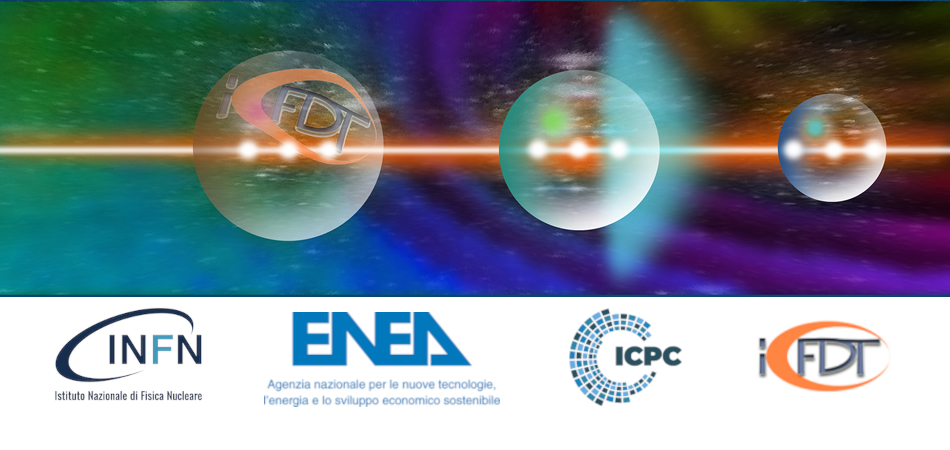Speaker
Description
The plasma-facing components (PFC) in EAST tokamak are primarily composed of metallic materials, including tungsten divertor and limiter, titanium-zirconium-molybdenum (TZM) alloy first wall, copper antennas, and various components made of iron alloys. Consequently, multiple high-Z impurity species including Fe, Cu, Mo, W, will exist in EAST plasma due to inevitably plasma-wall interaction (PWI). Plasma performance could then be degraded by serious radiation power loss contributed by those high-Z impurity ions once they transport into plasma core region. In order to monitor impurity components and their evolution, observe high-Z impurity density distribution and study the impact the high-Z impurity behavior on plasma performance, several sets of extreme ultraviolet spectrometers have been newly developed including four fast-time-response extreme ultraviolet spectrometers with a temporal resolution of 5 ms/frame working at 5-520 Å [1, 2], two pairs of space-resolved spectrometers with a large viewing range working at 30–520 Å [3], another two pairs with high temporal resolution working at 5–138 Å [4, 5]. The grazing-incidence flat-field imaging optics are designed for all the EUV spectrometers. An entrance slit of 30 μm width is installed on the fast-time-response spectrometer, and the space-resolved spectrometer is equipped with an entrance slit of 100 μm and a space-resolved slit of 1 mm width. The laminar-type concave holographic grating with varied-line-spacing groove of 2400 and 1200 grooves/mm is equipped for spectrometer working at shorter or longer wavelength range, respectively. Two CMOS detectors with fast readout rate are installed in two pairs space-resolved EUV spectrometer enable a high temporal resolution of 15ms/frame. While CCD detectors are installed for other six EUV spectrometers. During EAST experiment, four fast-time-response EUV spectrometers operated at the wavelength ranges of 5-50 Å, 40-180 Å, 160-386 Å, and 245-500 Å, respectively, allowing simultaneous observation of low and high charge states ions of high-Z impurities. Additionally, the space-resolved EUV spectrometers operating at 40-70 Å to measure the radial profile of the tungsten line emissions. The wavelength and absolute intensity calibration has been performed precisely. As a result, the spectra lines from C2+-C5+, O2+-O7+, Ne+-Ne9+, Si4+-Si11+, Ar9+-Ar15+, Al3+-Al12+, Fe4+-Fe23+, Cu9+-Cu26+, Mo4+-Mo31+, W4+-W46+ ions has been identified for the first time in EAST based on the fast-time-response EUV spectrometers [6-8], and the density profile of Fe22+, Mo30+-Mo31+, W43+-W45+ has been measured by space-resolved EUV spectrometers [9]. The tungsten behavior during plasma disruption and sawtooth crash has been studied utilizing the fast-time space-resolved spectrometers. The high-performance EUV spectrometers and the measurement of high-Z impurity profiles have become the powerful tools for studying the transport process of high-Z impurities and their impact on plasma performance.
References
[1] L. Zhang et al., Rev. Sci. Instrum. 86 (2015) 123509.
[2] Z. Xu et al., Nucl. Instrum. Meth. A 1010 (2021) 165545.
[3] L. Zhang et al., Nucl. Instrum. Meth. A 916 (2021) 169-178.
[4] Y. Cheng et al., Rev. Sci. Instrum. 93 (2022) 123501.
[5] Y. Cheng et al., Nucl. Instrum. Meth. A 1057 (2023) 168714.
[6] L. Li et al., Plasma Sci. Technol. 23 (2021) 075102
[7] W. Zhang et al., Phys. Scr. 97 (2022) 045604
[8] F. Zhang et al., Phys. Scr. 99 (2024) 025615
[9] Y. Cheng et al., IEEE Trans. Plasma Sci. 50 (2022)

